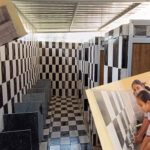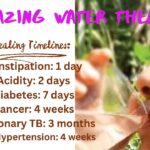Safe and Save should be the new mantra for honouring our water resources.We need a disruption that not only provides “healthy drinking water” but reduces the wastage in the process.


In the modern world, especially in urban centers of the country, water is seldom seen as a precious commodity. We open any tap at any hour of the day and out runs a steady flow of the most magical, life-giving element of our planet. Since it is ubiquitous for many people, we tend to forget how indispensable water is for the sustainance of the fragile human race. But, next time you finish a bottle or cold water or a long, hot shower, think about how crucial it is.
Zooming in on the liquid of life
Water is the single most important molecule, made with two atoms of hydrogen and one atom of oxygen. It is a tasteless and odorless liquid that has the power to quench thirst and make plants and trees grow. At room temperature, water has the unique ability to dissolve many other substances.
In small quantities, water appears colourless, but water actually has an intrinsic blue color caused by slight absorption of light at red wavelengths. This is why the water in your glass looks colourless while an ocean is a majestic blue. At its very core, water is a liquid that we could not live without even a day.
While we understand the crucial nature of pure, clean water, it is surprising and unfortunate that millions of people do not have access to clean water, and suffer from several diseases for this reason. Hygiene and sanitation are not as easily available as water itself, a fact that needs to change quickly.
The challenge: lack of access to sanitation of water in India
India is a vast country that holds more than 17.5% of the world’s population. However, it is astonishing that only 4% of the world’s freshwater resources lie within the country. Unfortunately, even this minuscule percentage is declining in terms of supply and quality. This is because our main sources of water, both ground and surface, face greater contamination from industrial effluents and sewage. When waste and sewage are dumped in to the water, germs infest it and make it unfit for human consumption. This water, if consumed, leads to diseases that often grow into fatal conditions over time.
If left untreated, surface water that reaches people through distributions systems can contain contaminants such as lead, arsenic, cadmium, mercury, high hardness, fluoride, nitrate, iron, insecticides, and surfactants. When these adulterants are introduced to potable water, it ceases to be healthy and life-giving. Moreover, if they’re not careful, these distribution systems can cause wastewater being mixed with treated drinking water, again leading to the mixing of microorganisms like viruses, bacteria, and protozoans. This water then becomes the leading cause of diseases such as diarrhea, typhoid fever, dysentery, cholera, viral hepatitis, and amoebiasis.
The solution: using high-tech mechanisms to purify water


It is only by understanding the nano science behind water molecules that we can develop a more democratized method of cleaning water. While there are several multi-technology devices used in India for purification, at times they may be very difficult to expand their ambit across India’s vast socio-economic landscape. As a result, there is a need to develop affordable and energy-efficient water purification technology that can suit the needs of a developing nation such as India.
Another major challenge is that the existing technologies purify water in the purest sense of the word. For instance, reverse osmosis the most widely used membrane technology for water purification, remove essential minerals from the water, wastes water and is energy inefficient.Similarly, other technologies such as ultra filtration, nano filtration, UV technology, chlorination, ozonization, candle filters, and activated carbon all have shortcomings and thus, have to combined with other complimentary technologies.
We need a disruption that not only provides “healthy drinking water” but reduces the wastage in the process. Safe and Save must be our motto in creating a balance between water purification-conservation. Especially for country like ours, we need a purification technology that does not waste water or load the environment with any chemical residues, maintains a healthy TDS level and is energy efficient. Fortunately, new-age companies are going forth with exceptional R&D and innovation to create such suitable products. Once these technologies reaches every nook and corner of the country, no one will long for clean water again and our future generation will thank us for conserving this valuable resource for them.


Rachna Dave – Founder
MicroGO, Chennai











